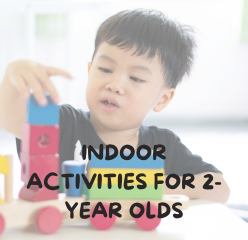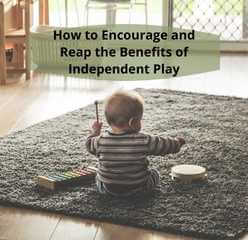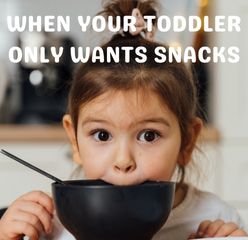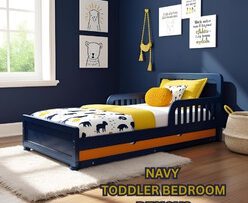Indoor activities for 2 year olds are so important for their development. Kids can’t be outside all day everyday. That’s why you need to have options of activities for toddlers at home or indoors.
RELATED: Why your clingy 2 year old only wants You
DISCLAIMER: THIS POST MAY CONTAIN AFFILIATE LINKS.
Why it’s hard to keep kids entertained indoors
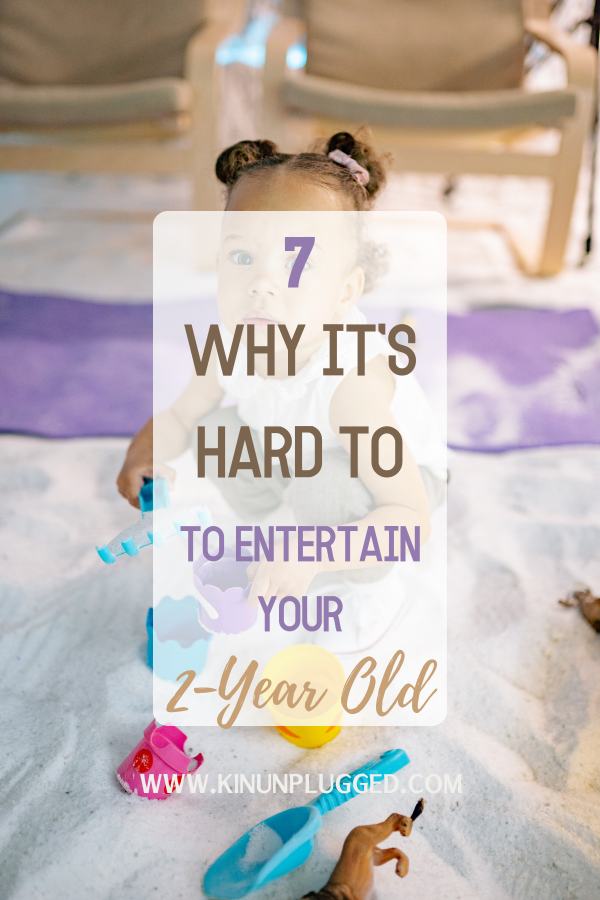
Toddlers have boundless energy and curiosity which can make it challenging to give them stimulating and safe indoor activities.
- Attention span. Two-year-olds typically have short attention spans, making it difficult to maintain their interest in indoor activities for an extended period.
- Safety concerns. Parents need to ensure that the indoor environment is childproofed to prevent accidents. This involves securing furniture, outlets, and keeping small objects out of reach.
- Boredom. Toddlers can quickly become bored with repetitive activities, so parents need to constantly find new and engaging indoor activities to keep them entertained.
- Limited independence. Two-year-olds are in the early stages of developing independence but still require close supervision. This balance between independence and safety can be challenging for parents.
- Messiness. Many indoor activities for 2-year-olds can be messy, which can be a challenge for parents who need to clean up after each activity.
- Weather constraints. Weather conditions may force parents to keep their children indoors, limiting options for outdoor play. This can be particularly challenging during inclement weather.
- Sibling dynamics. If there are siblings in the household, parents may need to navigate the dynamics of different age groups and interests when planning indoor activities.
READ: How to Encourage and Reap the Benefits of Independent Play
Why Indoor Activities are Important for 2-Year-Olds
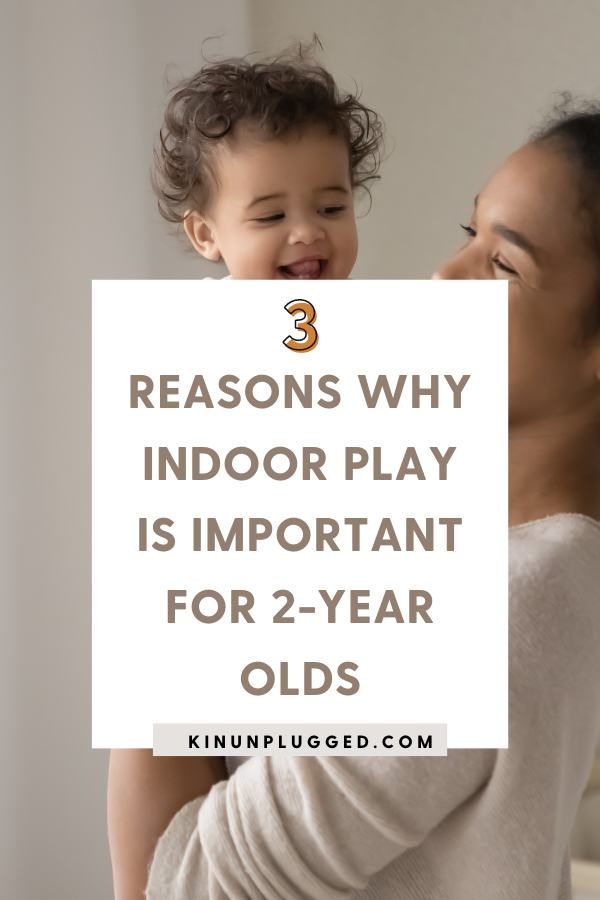
Indoor activities for 2-year-olds play a crucial role in their overall development.
1. Developmental milestones of 2 Year-Olds
At the age of 2, children experience significant developmental milestones in various domains:
- Language development. Two-year-olds begin to expand their vocabulary rapidly, learning new words and starting to form sentences. Engaging in indoor activities that involve storytelling and conversation can boost their language skills.
- Motor skills. Toddlers refine their gross and fine motor skills. They can walk, run, jump, and manipulate objects with increasing dexterity. Indoor activities for 2-year-olds like building with blocks or playing with puzzles help enhance these skills.
- Social and emotional development. Two-year-olds develop a greater understanding of their emotions and those of others. They may start to engage in parallel play with peers. Indoor activities can provide opportunities for social interaction and emotional expression.
2. Significance of cognitive and physical stimulation
Cognitive and physical stimulation are vital for a child’s development.
- Cognitive development. Indoor activities can stimulate a 2-year-old’s cognitive abilities by encouraging problem-solving, critical thinking, and creativity. Activities like matching games or shape sorting promote cognitive growth.
- Physical development. Physical activities such as dancing, climbing, and playing with age-appropriate toys help improve a child’s coordination, balance, and strength. These activities are essential for their physical development.
3. Role of indoor activities in child development
Indoor activities for 2-year-olds offer several benefits:
- Skill development. These activities promote the development of fine and gross motor skills, hand-eye coordination, and spatial awareness.
- Creativity and imagination. Indoor play encourages imaginative thinking and creativity, as children explore new scenarios and experiment with various materials.
- Problem-solving. Many indoor activities involve problem-solving, helping children learn to overcome challenges and build confidence.
- Social interaction. Participating in indoor activities with peers or family members fosters social skills, cooperation, and the ability to share and take turns.
- Safety and weather. Indoor activities provide a safe and weather-independent environment for play, ensuring children can engage in stimulating activities even when outdoor conditions are unfavorable.
How to create a safe indoor environment

Creating a safe indoor environment for 2-year-olds is paramount to ensure their well-being during indoor activities for 2-year-olds.
1. Childproofing
- Secure furniture: Anchor heavy furniture and appliances to the wall to prevent tipping. This includes bookshelves, dressers, and TVs, which could pose a hazard if pulled or climbed on.
- Outlet covers: Cover electrical outlets with safety plugs or outlet covers to prevent little fingers from poking into them.
- Cabinet locks: Install childproof locks on cabinets and drawers that contain sharp objects, cleaning supplies, or other potentially dangerous items.
- Safety gates: Use safety gates to block off stairs or rooms that are off-limits to your child.
- Cord management: Keep cords from blinds and curtains out of reach, as they can pose a strangulation risk.
- Safety latches: Use safety latches on toilets to prevent access and reduce the risk of drowning.
2. Supervision
- Constant supervision: Always supervise your child during indoor activities for 2-year-olds. Toddlers are quick and curious, so even a momentary lapse in attention can lead to accidents.
- Stay within arm’s reach: When engaging in activities with your child, stay within arm’s reach to prevent accidents and provide immediate assistance if needed.
- Educate caregivers: Ensure that anyone caring for your child is aware of safety protocols and knows how to respond in emergencies.
- Teach boundaries: Teach your child the boundaries of safe play areas and the importance of not touching dangerous items.
3. Safety measures
- Secure hazardous items: Keep items like scissors, matches, medicines, and small choking hazards out of reach or locked away.
- Secure blind cords: Tie up or secure blind cords high out of reach to prevent strangulation.
- Remove toxic plants: Ensure indoor plants are non-toxic, as some plants can be harmful if ingested.
- Soft flooring: Use soft and cushioned flooring materials in play areas to minimize injury if your child falls.
- Window safety: Install window guards or locks to prevent falls.
- Eliminate small objects: Remove small items that could be choking hazards from play areas.
Importance of Supervision During Indoor Play
Supervision is crucial during indoor activities for 2-year-olds for several reasons:
- Accident prevention: Young children may not fully grasp the concept of danger. Supervision helps prevent accidents and ensures a quick response if one occurs.
- Guidance: Supervising indoor play allows you to guide your child’s activities, making sure they engage in age-appropriate and safe play.
- Learning opportunities: It’s a chance to interact, teach and bond with your child, helping them learn about their environment and the world around them.
- Emergency response: In case of injuries or emergencies, your immediate presence can make all the difference in providing aid or calling for help.
16 Indoor Activities for 2-Year-Olds

Creative activities
- 1. Window decoration
- Decorating windows with washable markers or window clings.
- Age-Appropriate: Toddlers and preschoolers.
- Use washable markers or homemade window clings made from plastic bags.
- Encourages creativity and artistic expression. Supports fine motor skills through drawing and sticking decorations.
- 2. Painting
- Allowing children to express themselves through painting with brushes, fingers, or other creative tools.
- Age-Appropriate: Toddlers and up.
- Use old newspapers or cardboard as a canvas and homemade, non-toxic paint.
- Fosters creativity, imagination, and self-expression. Develops fine motor skills, hand-eye coordination, and color recognition.

- 3. Play Doh
- Molding and shaping with playdough to encourage creativity and fine motor skills.
- Age-Appropriate: Preschoolers and up.
- Make homemade playdough using flour, salt, water, and food coloring.
- Enhances fine motor skills and hand strength. Encourages imaginative play, creativity, and sensory exploration.
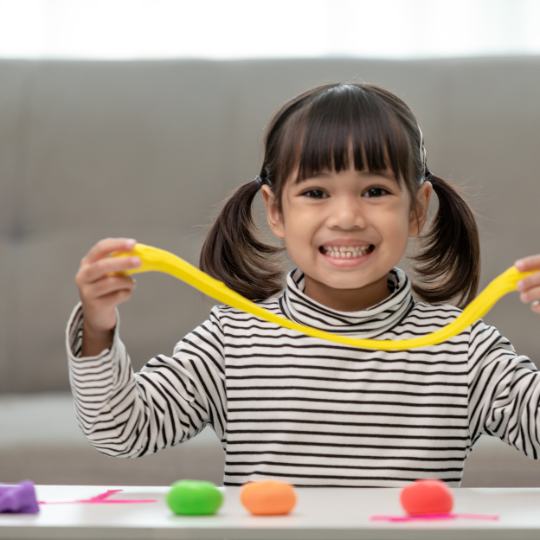
Educational activities
4. Alphabet workout
- A fun way to learn the alphabet while doing physical activities corresponding to each letter (e.g., A for “arm circles”).
- Age-Appropriate: Preschoolers and up.
- Create flashcards with letters and illustrations of exercises.
- Promotes physical activity and coordination while teaching the alphabet. Reinforces letter recognition and phonemic awareness.
- 5. Letter match
- Matching letters on flashcards or magnetic letters to corresponding objects or words.
- Age-Appropriate: Preschoolers and up.
- Make your own flashcards or use cardboard and magnets.
- Enhances letter recognition, vocabulary, and early reading skills. Encourages cognitive development through matching and problem-solving.
Physical activities
6. Obstacle course
- Setting up a mini obstacle course with cushions, tunnels, and hurdles for physical activity and coordination.
- Age-Appropriate: Preschoolers and up.
- Use household items like cushions and cardboard boxes.
- Improves gross motor skills, balance, and coordination. Builds problem-solving skills and boosts physical fitness.
- 7. Yoga
- Introducing basic yoga poses and stretching exercises for balance and flexibility.
- Age-Appropriate: Preschoolers and up.
- Follow online videos or use picture cards with yoga poses.
- Enhances flexibility, balance, and strength. Promotes relaxation, mindfulness, and body awareness.
Sensory activities
8. Sensory bin
- Filling a container with sensory materials like rice, beans, or water, along with toys for tactile exploration.
- Age-Appropriate: Toddlers and up.
- Use dried pasta, sand, or even kitchen utensils as sensory materials.
- Provides sensory stimulation, including touch and exploration. Boosts fine motor skills, language development, and creativity.
- 9. Cloud dough
- Creating a soft, moldable dough using just flour and baby oil, offering a unique tactile experience.
- Age-Appropriate: Toddlers and up.
- Mix flour and baby oil at home.
- Offers a unique tactile experience. Develops sensory awareness, fine motor skills, and creativity.
Other Activities
10. Rubber toy Baths
- Bathing toys in a container of water, promoting sensory play.
- Age-Appropriate: Toddlers and up.
- Use a basin or large bowl as the “bath.”
- Encourages sensory exploration and water play. Promotes hand-eye coordination and imaginative play.
- 11. Bread painting
- Painting with edible paint on slices of bread, allowing for creativity and a tasty snack.
- Age-Appropriate: Preschoolers and up.
- Make edible paint using yogurt and food coloring.
- Combines creativity with a sensory experience. Can improve fine motor skills and color recognition.
- 12. Pasta play
- Playing with cooked pasta, offering a sensory experience and opportunities for fine motor skill development.
- Age-Appropriate: Toddlers and up.
- Cook and cool pasta before play.
- Promotes sensory exploration and fine motor development. Offers opportunities for imaginative play and creativity.
- 13. Whisking bubbles
- Whisking up bubbles in a bowl of soapy water to create foam, promoting hand-eye coordination.
- Age-Appropriate: Toddlers and up.
- Use regular dish soap and water.
- Enhances hand-eye coordination and fine motor skills. Provides a fun way to explore bubbles.
- 14. Ice play
- Exploring ice cubes with different textures and temperatures, ideal for hot summer days.
- Age-Appropriate: Toddlers and up.
- Freeze water with small toys or objects inside.
- Engages sensory exploration and introduces concepts of temperature and texture. Can also develop fine motor skills.
- 15. Stacking cups
- Stacking and nesting cups to build fine motor skills and hand-eye coordination.
- Age-Appropriate: Toddlers and up.
- Use plastic cups or recycled containers.
- Promotes fine motor skills, hand-eye coordination, and spatial awareness. Offers opportunities for creative play.
- 16. Chalk art
- Drawing on the pavement or chalkboard with colorful chalk, encouraging creativity and gross motor skills.
- Age-Appropriate: Toddlers and up.
- Purchase chalk or make your own by grinding sidewalk chalk into powder and mixing with water.
- Encourages outdoor play and creativity. Develops fine motor skills, hand-eye coordination, and imagination.
These options offer a wide range of experiences for indoor activities for 2-year olds. They accommodate various age groups and budget constraints.
Overcoming challenges to toddler indoor activities
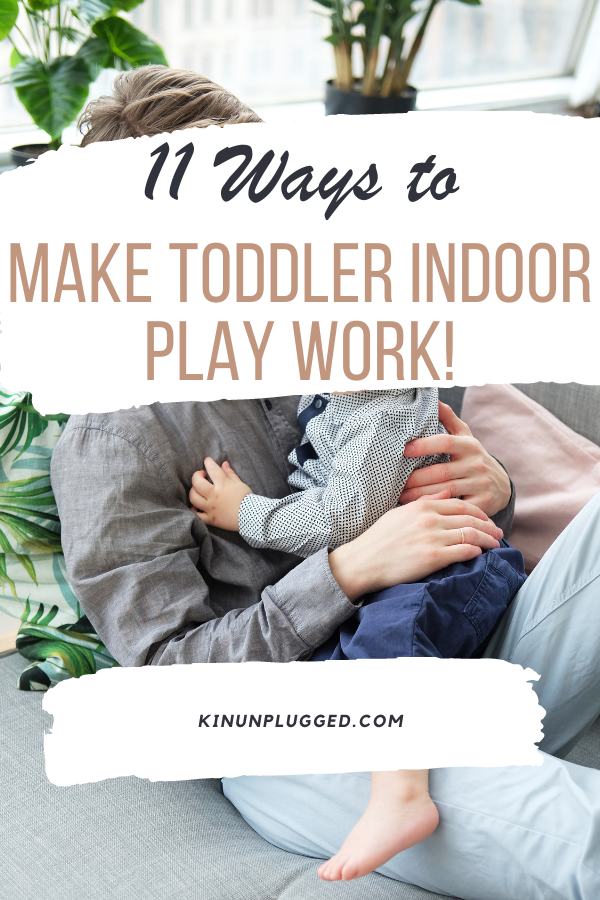
You might foresee some challenges when engaging in indoor activities for 2-year-olds. Here are some tips to address common concerns.
1. Limited space – lack of room to move
Solution: Maximize vertical space by using wall-mounted organizers or shelves to store toys and create more floor space. Consider folding or collapsible play equipment to save space when not in use.
2. Safety concerns in small spaces
Solution: Prioritize childproofing measures even more in a confined space. Use safety gates to block off areas with hazards and ensure that furniture is securely anchored.
3. Boredom due to limited variety
Solution: Rotate toys and activities regularly to maintain your child’s interest. Store some toys out of reach and switch them out periodically to create novelty.
4. Noise and crowded space
Solution: Create designated quiet areas for reading or calm activities. Use noise-cancelling headphones or soundproofing materials if possible.
5. Space-efficient indoor activities
Alternative activities:
- Tabletop activities: Engage in activities that can be done at a table, such as puzzles, coloring, or sorting games.
- Indoor picnics: Lay a blanket on the floor for an indoor picnic with snacks and a favorite book.
- Story corner: Create a cozy reading nook with cushions and books.
- DIY mini-gym: Set up a small indoor obstacle course with cushions, pillows, and soft play equipment.
- Sensory bags: Create sensory bags filled with materials like rice or beans for tactile exploration.
6. Virtual playdates
Solution: If your space is too small for in-person playdates, organize virtual playdates where your child can interact with friends or family members online. Set up a designated space for these virtual meetups.
7. Use community resources
Solution: Look for local indoor play spaces or community centers with play areas. These venues often provide a change of scenery and more space for your child to explore.
8. Outdoor alternatives
Solution: If possible, spend time outdoors in parks, playgrounds, or open spaces. Outdoor play can provide a release of energy and a change of environment.
9. Multi-purpose furniture
Solution: Invest in multi-purpose furniture, such as a coffee table with storage, to maximize space utilization. These can double as play surfaces.
10. Minimalist approach
Solution: Embrace a minimalist approach to reduce clutter and create a more open play environment. Keep only essential toys and activities readily accessible.
11. Parent engagement
Solution: Engage in activities that require minimal space but encourage parent-child interaction, such as reading, singing, and simple art projects.
22 Essential supplies and materials for indoor activities

Washable markers or window clings


Non-toxic crayons, markers, or child-safe paints

Paper or canvases for painting

Store-bought or homemade playdough

Child-safe sculpting tools

Flashcards with alphabet exercises

Yoga mats

Sensory materials like rice, beans, or sand
Flour
Baby oil
Bread
Food colouring

Yoghurt
Cooked pasta
Whisk
Ice cubes with small toys or objects inside
Containers or trays for ice play
Stacking cups or containers
Chalk in various colors

Chalkboard surface

Let me know your favourite indoor activities for 2 year olds in the comments below!
Also share this on social media with your friends who are moms of toddlers.

